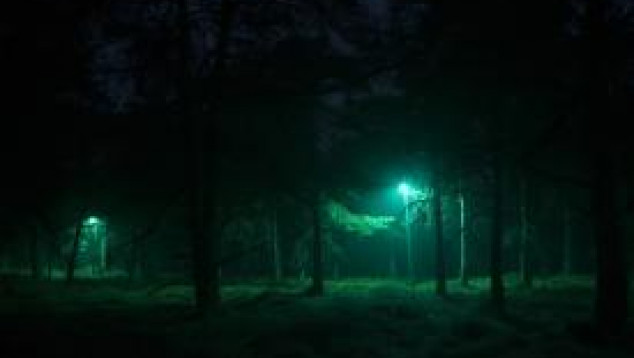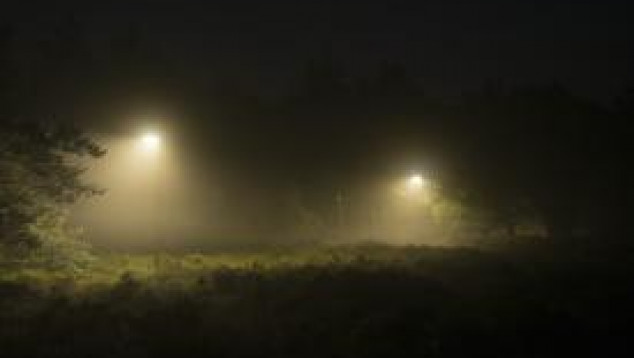Light on Nature
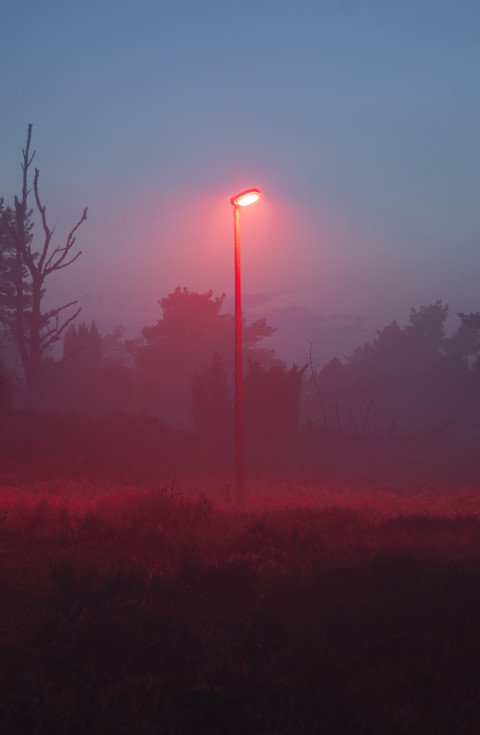
We produce more and more light at night. Virtually everybody in Europe or the US lives in a light polluted place: all areas where artificial light always exceeds the light of the moon and the stars. These areas expand with about two percent per year, while already light polluted areas become even brighter at night.
Artificial light at night is impacting our nature extensively. Together with many other organisations, the Netherlands Institute for Ecology (NIOO-KNAW) is investigating these effects in the Light on Nature and Light on Landscape project. An important part of these studies is measuring the effects of experimental lighting in places that were previously dark. Nowadays, we can easily change the colour spectrum of lamplight, which could reduce potential harmful effects. Therefore, we investigate the effects not only of white light, but also of red and green light on plants and animals. We look at as many species groups as possible: plants, moths, bats, mice, mustelids and other mammals, birds and amphibians.
Media snippet
Theme issue of 'scape magazine: NIGHTSCAPES / An ode to darkness
Interview with ecologist Kamiel Spoelstra
2023 'scape magazine
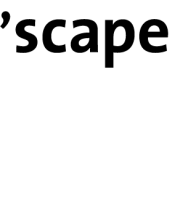
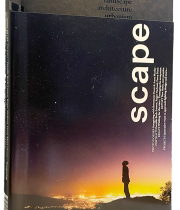
Publications
Scientific publications
Jägerbrand, A. K., and K. Spoelstra. Effects of anthropogenic light on species and ecosystems (2023). Science 380:1125–1130. download or PDF
Jabbur, M. L., C. Dani, K. Spoelstra, A. N. Dodd, and C. H. Johnson. Evaluating the Adaptive Fitness of Circadian Clocks and their Evolution (2024). Journal of Biological Rhythms:07487304231219206. download
Spoelstra, K., S. Teurlincx, M. Courbois, Z. M. Hopkins, M. E. Visser, T. M. Jones, and G. R. Hopkins. Long-term exposure to experimental light affects the ground-dwelling invertebrate community, independent of light spectra (2023). Philosophical Transactions of the Royal Society B: Biological Sciences 378:20220364. download (available in June 2024)
Tomotani, B. M., F. Timpen, and K. Spoelstra. Ingrained city rhythms: flexible activity timing but more persistent circadian pace in urban birds (2023). Proceedings of the Royal Society B: Biological Sciences 290:20222605. download
Cieraad, E., E. Strange, M. Flink, M. Schrama, and K. Spoelstra. Artificial light at night affects plant–herbivore interactions (2023). Journal of Applied Ecology 60:400–410. download
Barré, K., I. Thomas, I. Le Viol, K. Spoelstra, and C. Kerbiriou. Manipulating spectra of artificial light affects movement patterns of bats along ecological corridors (2023). Animal Conservation 26:865–875.
van Dis, N. E., K. Spoelstra, M. E. Visser, and D. M. Dominoni. Color of Artificial Light at Night Affects Incubation Behavior in the Great Tit, Parus major (2021). Frontiers in Ecology and Evolution 9.
Voigt, C. C., J. Dekker, M. Fritze, S. Gazaryan, F. Hölker, G. Jones, D. Lewanzik, H. J. G. A. Limpens, F. Mathews, J. Rydell, K. Spoelstra, and M. Zagmajster. The Impact Of Light Pollution On Bats Varies According To Foraging Guild And Habitat Context (2021). BioScience 71:1103–1109.
Hölker, F., J. Bolliger, T. W. Davies, S. Giavi, A. Jechow, G. Kalinkat, T. Longcore, K. Spoelstra, S. Tidau, M. E. Visser, and E. Knop (2021). 11 Pressing Research Questions on How Light Pollution Affects Biodiversity. Frontiers in Ecology and Evolution 9.
Barré, K., K. Spoelstra, Y. Bas, S. Challe, D. Lapostolle, and C. Kerbiriou. Artificial light may change flight patterns of bats near bridges along urban waterways (2021). Animal Conservation 24:2 259-267. download(external link)
Barré, K., C. Kerbiriou, R.-K. Ing, Y. Bas, C. Azam, I. Le Viol, and K. Spoelstra. Bats seek refuge in cluttered environment when exposed to white and red lights at night (2021). Movement Ecology 9:3. download(external link)
van Grunsven, R. H. A., J. R. van Deijk, M. Donners, F. Berendse, M. E. Visser, E. Veenendaal, and K. Spoelstra. Experimental light at night has a negative long-term impact on macro-moth populations (2020). Current Biology 30:R694–R695. download(external link)
Boom, M. P., K. Spoelstra, A. Biere, E. Knop, and M. E. Visser. Pollination and fruit infestation under artificial light at night: light colour matters (2020). Scientific Reports 10:18389. download(external link)
Ulgezen, Z. N., Käpylä Teemu, Meerlo Peter, Spoelstra Kamiel, Visser Marcel E., and Dominoni Davide M. The preference and costs of sleeping under light at night in forest and urban great tits (2019). Proceedings of the Royal Society B: Biological Sciences 286:20190872. download(external link)
Dominoni, D M, J. K. Jensen, M. de Jong, M. E. Visser, and K. Spoelstra. Artificial light at night, in interaction with spring temperature, modulates timing of reproduction in a passerine bird (2019). Ecological Applications 30:e02062. download(external link)
Spoelstra, K., I. Verhagen, D. Meijer, and M. E. Visser. Artificial light at night shifts daily activity patterns but not the internal clock in the great tit (Parus major) (2018). Proceedings of the Royal Society B: Biological Sciences 285:20172751.
Spoelstra, K., Ramakers, J. J. C., Dis, N. E. van, Visser, M. E. No effect of artificial light of different colors on commuting Daubenton’s bats (Myotis daubentonii) in a choice experiment. Journal of Experimental Zoology A (2018) doi.org/10.1002/jez.2178 download(externe link)
de Jong, M., K. P. Lamers, M. Eugster, J. Q. Ouyang, A. D. Silva, A. C. Mateman, R. H. A. van Grunsven, M. E. Visser, and K. Spoelstra. Effects of experimental light at night on extra-pair paternity in a songbird (2018). Journal of Experimental Zoology Part A: Ecological and Integrative Physiology 329, 4441-448. download(external link)
Welbers, A. A. M. H. et al. Artificial Light at Night Reduces Daily Energy Expenditure in Breeding Great Tits (Parus major). Frontiers in Ecology and Evolution 5, (2017). download(external link)
Spoelstra, K., R. H. A. van Grunsven, J. J. C. Ramakers, K. B. Ferguson, T. Raap, M. Donners, E. M. Veenendaal, and M. E. Visser. Response of bats to light with different spectra: light-shy and agile bat presence is affected by white and green, but not red light (2017). Proc. R. Soc. B 284:20170075. download
Ouyang, J. Q., M. De Jong, R. H. A. Van Grunsven, K. D. Matson, M. F. Haussmann, P. Meerlo, M. Visser, and K. Spoelstra. What type of rigorous experiments are needed to investigate the impact of artificial light at night on individuals and populations? (2017) Global Change Biology 23. download
Ouyang, J. Q., M. de Jong, R. H. A. van Grunsven, K. D. Matson, M. F. Haussmann, P. Meerlo, M. E. Visser, and K. Spoelstra. Restless roosts: Light pollution affects behavior, sleep, and physiology in a free-living songbird (2017). Global Change Biology 23:4987–4994. download
De Jong, M., S. P. Caro, P. Gienapp, K. Spoelstra, and M. E. Visser. Early Birds by Light at Night: Effects of Light Color and Intensity on Daily Activity Patterns in Blue Tits (2017). Journal of Biological Rhythms 32:323–333. download
Langevelde, F. van, Grunsven, R. H. A. van, Veenendaal, E. M. & Fijen, T. P. M. Artificial night lighting inhibits feeding in moths. Biology Letters 13, 20160874 (2017). download
Da Silva, A. et al. Experimental illumination of a forest: no effects of lights of different colours on the onset of the dawn chorus in songbirds. Royal Society Open Science 4, 160638 (2017). download
Van Grunsven, R. H. A. van, Creemers, R., Joosten, K., Donners, M. & Veenendaal, E. M. Behaviour of migrating toads under artificial lights differs from other phases of their life cycle. Amphibia-Reptilia (2016). doi:10.1163/15685381-00003081 not available yet
van Grunsven R, Joosten K, Creemers R (2016) Effect straatverlichting op paddentrek. Tijdschrift RAVON 58(17) 56-58 download PDF
Jong, M. de. Illuminating a bird’s world: effects of artificial light at night on avian ecology. (2016). download
de Jong, M., Ouyang, J. Q., van Grunsven, R. H. A., Visser, M. E. & Spoelstra, K. Do Wild Great Tits Avoid Exposure to Light at Night? PLOS ONE 11, e0157357 (2016). download
de Jong, M. et al. Dose-dependent responses of avian daily rhythms to artificial light at night. Physiology & Behavior 155, 172–179 (2016). download / download SI
van Geffen, K. G. et al. Artificial light at night inhibits mating in a Geometrid moth. Insect Conservation and Diversity 8, 282–287 (2015). download
Van Geffen, K. G. et al. Artificial night lighting disrupts sex pheromone in a noctuid moth: Moth sex pheromone in illuminated nights. Ecological Entomology 40, 401–408 (2015). not avaliable yet
Swaddle, J. P. et al. A framework to assess evolutionary responses to anthropogenic light and sound. Trends in Ecology & Evolution 30, 550–560 (2015). download
Spoelstra, K. et al. Experimental illumination of natural habitat—an experimental set-up to assess the direct and indirect ecological consequences of artificial light of different spectral composition. Philosophical Transactions of the Royal Society of London B: Biological Sciences 370, 20140129 (2015). download / download SI
Ouyang, J. Q. et al. Stressful colours: corticosterone concentrations in a free-living songbird vary with the spectral composition of experimental illumination. Biology Letters 11, 20150517 (2015). download
Geffen, K. G. van. Moths in illuminated nights : articificial night effects on moth ecology. (Wageningen University, 2015). download
de Jong, M. et al. Effects of nocturnal illumination on life-history decisions and fitness in two wild songbird species. Philosophical Transactions of the Royal Society of London B: Biological Sciences 370, 20140128 (2015). download / download SI
van Grunsven, R. H. A., Lham, D., van Geffen, K. G. & Veenendaal, E. M. Range of attraction of a 6-W moth light trap. Entomologia Experimentalis et Applicata 152, 87–90 (2014). not available yet
van Grunsven, R. H. A. et al. Spectral composition of light sources and insect phototaxis, with an evaluation of existing spectral response models. Journal of Insect Conservation 18, 225–231 (2014). download
van Geffen, K. G., van Grunsven, R. H. A., van Ruijven, J., Berendse, F. & Veenendaal, E. M. Artificial light at night causes diapause inhibition and sex-specific life history changes in a moth. Ecology and Evolution n/a-n/a (2014). doi:10.1002/ece3.1090 download
Spoelstra, K. & Visser, M. E. The impact of artificial light on avian ecology. in Avian Urban Ecology: Behavioural and Physiological Adaptations 21 (2013). view
Titulaer, M., Spoelstra, K., Lange, C. Y. M. J. G. & Visser, M. E. Activity Patterns during Food Provisioning Are Affected by Artificial Light in Free Living Great Tits (Parus major). PLoS ONE 7, e37377 (2012). download
Participants
Technology Foundation STW realises the transfer of knowledge between the technical sciences and users. It does this by funding excellent technical scientific research and by bringing researchers and users together in each project.
http://www.stw.nl/
The scientists at the Netherlands Institute of Ecology (NIOO-KNAW) perform basic and strategic ecological research on individual organisms, populations, ecological communities and ecosystems.
http://www.nioo.knaw.nl/
‘To explore the potential of nature to improve the quality of life.’ That is the mission of Wageningen UR (University & Research centre). The strength of Wageningen UR lies in its ability to join the forces of specialised research institutes and Wageningen University.
http://www.wageningenur.nl/
Royal Philips of the Netherlands is a diversified Health and Well-being company, focused on improving people’s lives through timely innovations. As a world leader in healthcare, lifestyle and lighting, Philips integrates technologies and design into people-centric solutions, based on fundamental customer insights.
http://www.philips.nl/
NAM is an exploration and production company with authentic Dutch roots and has its headquarters in Assen in the Netherlands. Our core business is exploring for and producing oil and gas, both on land and offshore in the Netherlands.
http://www.nam.nl/
Well-targeted lighting of public and private spaces improves safety. Ziut can help you manage a public space or site in such a way that visitors and users feel comfortable and safe.
http://www.ziut.nl/
Sovon, Dutch Centre for Field Ornithology, is organising monitoring of wild bird populations in the Netherlands and carries out research to study population demography in bird populations. Results of censuses and research projects are used for nature management policies, management plans en spatial planning.
http://www.sovon.nl/
Dutch Butterfly Conservation works on conserving, restoring and developing nature with the focus on butterflies, moths and dragonflies. Dutch Butterfly Conservation carries out research and gives advice to those responsible for deciding the use, development and management of land in all sorts of areas. http://www.vlinderstichting.nl/
The Dutch centre for avian migration and demography is a the central organization of all bird ringing activity in the Netherlands. It is a cooperation between NIOO-KNAW and the Dutch society for bird ringers.
http://www.vogeltrekstation.nl/
RAVON stands for Reptile, Amphibian and Fish Conservation Netherlands. The contributors and volunteers support the conservation and research of reptiles, amphibians and fish. They collect distribution data and monitoring information, and carry out ecological field research.
http://www.ravon.nl/
All research on wild plants and the protection of plants comes together at FLORON. FLORON coordinates national plant surveys, gives advice and gathers information for scientific studies, nature management and the protection of plant habitat.
http://www.floron.nl/
The Dutch mammal society protects native mammal species, and aims to expand the knowledge on the distribution of mammals in the Netherlands.http://www.zoogdiervereniging.nl/
The municipality of Ede has over 110.000 inhabitants. It is a rapidly developing residential and business area, rich in greenery, with continually expanding economic activity. Provisions in the field of education, culture and health are keeping apace with this.
https://www.ede.nl/
The Drentse Landschap foundation is a provincial (province of Drente) oranisation, and established for the protection of natural habiat in Drenthe.
http://www.drentslandschap.nl
Natuurmonumenten - 'Nature Monuments' - is an association with a long tradition in the protection of natural habitat in the Netherlands. Natuurmonumenten has over 700,000 members and has a very central position in the Dutch society.
http://www.natuurmonumenten.nl/
Staatsbosbeheer, our national forestry organization, posesses and manages forested areas and natural habitat in the Netherlands. Staatsbosbeheer aims for a natural environment where visitors can experience nature at it's best.
http://www.staatsbosbeheer.nl/
The Netherlands Ministry of Defence comprises the Central Staff, the Royal Netherlands Navy, the Royal Netherlands Army, the Royal Netherlands Air Force, the Royal Netherlands Marechaussee, the Support Command and the Defence Materiel Organisation.
http://www.defensie.nl/
Contact
Kamiel Spoelstra
+31610816809
K.Spoelstra@nioo.knaw.nl
Visiting adress
Droevendaalsesteeg 10
6708 PB Wageningen
The Netherlands
+31 (0) 317 47 34 00
